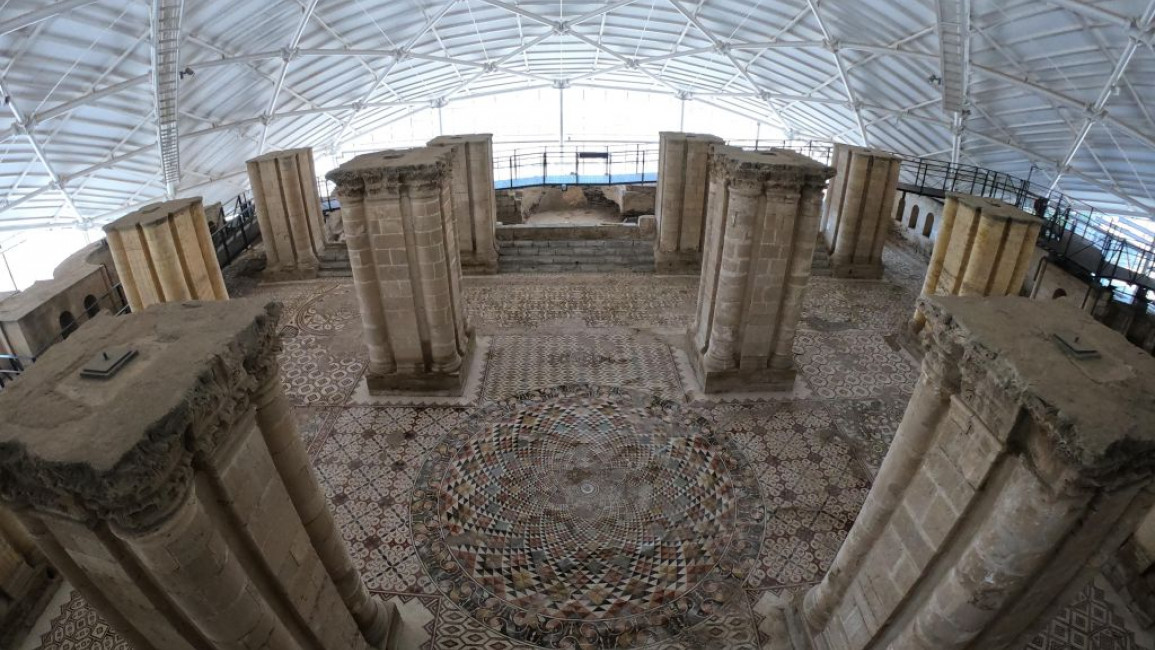Five-million-square Umayyad mosaic unveiled in West Bank
A five-million-square ancient mosaic was unveiled in the Occupied West Bank on Thursday, believed to be one of the largest and most important mosaics in the world.
The historical treasure decorates the main bathhouse at Hisham's Palace, a major archaeological site just north of the city of Jericho.
It is more than 1,000 years old and has taken five years as well as some $12 million to restore, so it can be opened up safely to the public.
Palestinian Tourism Minister Rula Maa’yah said the mosaic is an international treasure both because of its immense size and because it is preserved in its original location.
The size of the mosaic panels is approximately 835 square metres.
They show beautiful floral and geometric designs made up of 21 colours, including red, blue and ochre.
#Jericho #HishamPalace 🇵🇸 the world largest mosaic! @EBAFJerusalem @troccazrene @MuseeLouvre pic.twitter.com/gDKdretyVR
— Martin Parent (@MartinJerusalem) October 30, 2021
One part of the ancient floor shows the “tree of life,” said Jericho Governor Majed Al-Fityani, with a lion preying on a deer on the left side of the tree and two deers living peacefully on the other side.
This image is supposed to symbolise war and peace.
The mosaic is believed to be from the Umayyad period, which lasted from 660 to 750 AD.
It is disputed whether the Umayyad Caliph Hisham bin Abd al-Malik or his nephew and successor al-Walid II built the Palace.
In 947 AD the mosaic was buried under rubble caused by an earthquake.
The Palace remained forgotten for centuries until it was rediscovered in the 19th century.
In 2016 a Japanese-funded restoration effort was launched. Five years later, the ancient artefact was uncovered on Thursday for members of the public and press, then recovered until a protective roof is finished next year.
The Palestinian tourism ministry hopes the newly-restored mosaic will become a major attraction in future.
Palestinians in the West Bank live under Israeli military occupation, with restrictions on their freedom of movement and access to basic amenities.
Often Israeli authorities deny entry for non-registered Palestinians into the West Bank as well as obstructing entry for their non-registered spouses and other family members, according to Human Rights Watch.
The unveiling comes just weeks after Israeli authorities demolished parts of a Palestinian cemetery to make way for a “biblical” theme park.
Palestinian protesters were attacked on Tuesday by Israeli forces as they demonstrated against the bulldozing.





